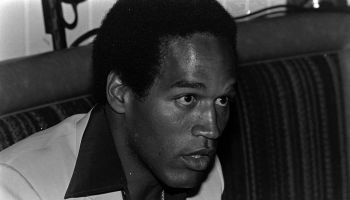This week marks the 30th anniversary of the first published reports of AIDS in the United States. The disease, which was once considered largely an ailment affecting only white gay males, quickly grew to become a far bigger problem for the black community.
According to the Centers for Disease Control and Prevention, by the end of 1981 – the year that AIDS became part of the American lexicon – nearly 20 percent of all reported AIDS cases were among African-Americans, who at the time made up only 13 percent of the population.
Today, AIDS is the third leading cause of death among black men and women ages 35 – 44. And although black Americans now make up about 14 percent of the U.S. population, they represent half of those living with and dying from HIV/AIDS.
Health experts and activists around the country have mobilized to reduce the spread of HIV/AIDS in the black community. In the past three decades, there has been significant progress in preventing the spread of HIV, saving more than $125 billion in treatment costs.
Still, one of the biggest problems, officials say, is that as treatment has advanced to allow those who are HIV-positive to live longer with the virus, there has been an accompanying sense that the crisis has waned and that many in the African-American community underestimate their risk for infection or believe HIV is no longer a serious risk.
“People may not be as vigilant as they need to be about protecting themselves and their loved ones as they should be,” Kevin Fenton, M.D., director of the Centers for Disease Control’s National Center for HIV/AIDS, Viral Hepatitis, STD and TB Prevention, told BlackAmericaWeb.com in a recent interview.
“We’re not seeing HIV in the news as much as we used to, and often when we do see it, (coverage) goes straight to Africa, instead of our cities in the U.S., our urban areas and our rural communities.”
In July 2010, President Barack Obama launched the National HIV/AIDS Strategy, which provides a first-ever blueprint for fighting the U.S. epidemic, with a particular focus on populations hardest hit, including African-Americans.
The CDC has launched an aggressive multi-faceted approach to increase HIV awareness and provide resources to help reduce the factors that fuel the epidemic, including a multimillion dollar testing initiative, increasing the number of prevention programs around the country and outreach efforts through the Act Against AIDS Leadership Initiative to work with longstanding institutions to reach a broader spectrum of the community.
“There are about 250,000 people nationwide who do not know they are HIV-positive, and about half the people living with HIV are African-American,” Fenton said.
Poverty and high unemployment rates may limit access to health care, especially as the unemployed lose health insurance. High levels of incarceration lead to different patterns of relationships in the community because there are fewer men available, and those who remain are having sex with increasing numbers of women.
Further, men in prison may be having sex with other men, and the practice may continue once they leave prison, even if they return home to heterosexual relationships.
The stigma of HIV/AIDS remains strong in the black community, discouraging people from being open about their status or being tested to find out their status. And there is reluctance in many parts of the black community, Fenton said, to discuss sex and sexuality with young people, who are likely to change partners more frequently.
“Change really comes from within,” Fenton said. “We should be thinking what more can we do individually to keep HIV from spreading.”
To find out more about HIV/AIDS and where you can receive a confidential HIV test, visit www.hivtest.org or call (800) CDC-INFO.
“Get help with how to cope with that effectively,” Fenton said. “It is a challenge, but not impossible.”















